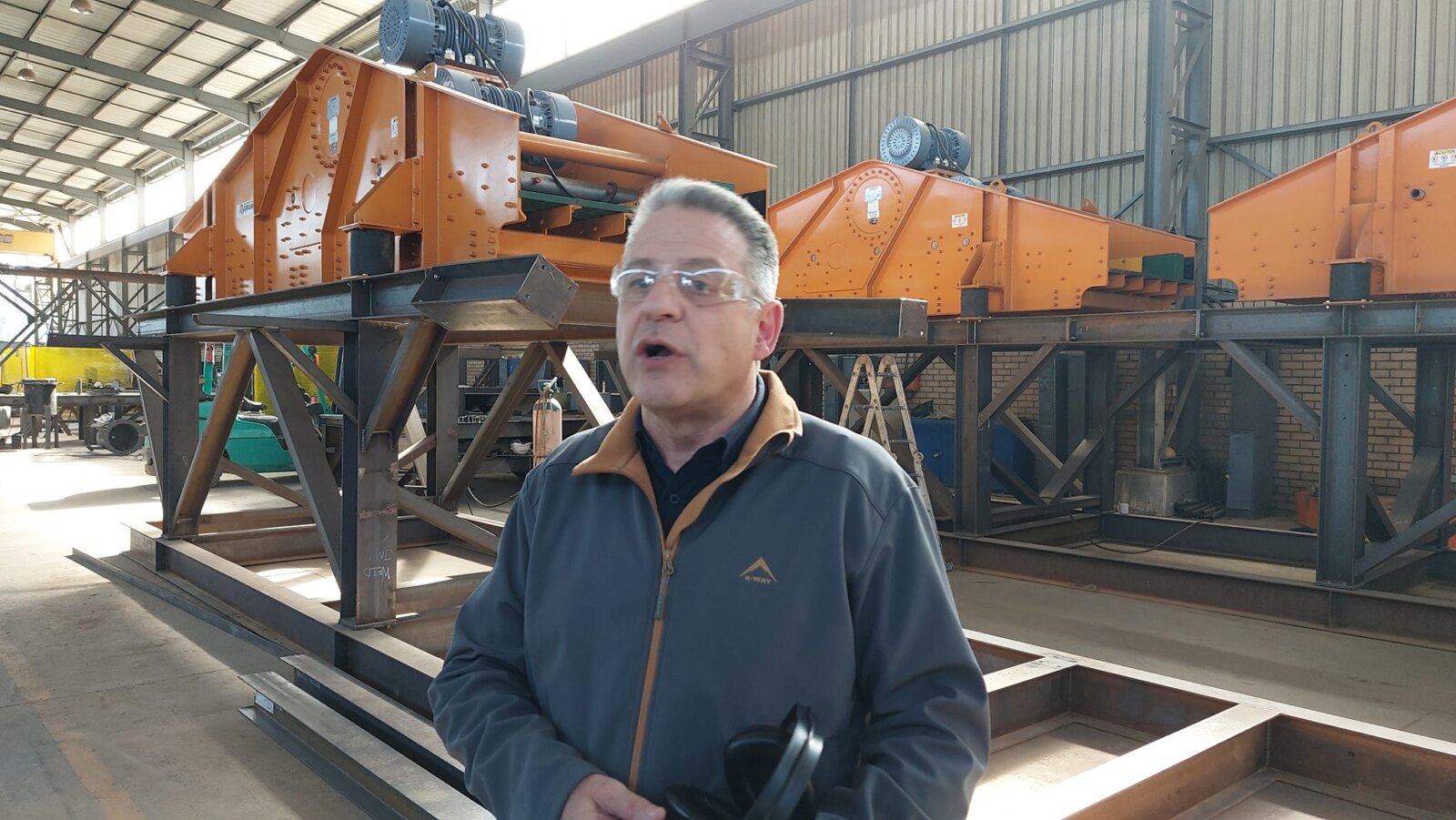Bravura’s State-of-the-Art Processing Plant for Kamativi Unveiled

Pan-African diversified miner Bravura has showcased its highly advanced, state-of-the-art lithium processing plant, which is being manufactured by Manhattan in South Africa.
Rudairo Mapuranga
Mining Zimbabwe was part of a Media tour that was conducted on the 6th of June 2024 at Manhattan Corporation, an engineering company which is manufacturing a state-of-the-art processing plant for Bravura in South Africa.
see images HERE
Eng. Chris Pouroullis, Chairman of Manhattan, provided a detailed presentation and tour of the plant, highlighting its key features and advanced technologies. The plant has a 600-tonne-per-hour feed section at the front end, leading into a 300-tonne-per-hour wash plant. This feeds into the Dense Media Separation (DMS) section, processing 150 tonnes per hour. The final product is spodumene, produced at approximately 10 tonnes per hour, depending on the input feed grade.
The plant’s design is based on data published by Bravura and extensive test work, effectively handling the coarse fraction of the Kamativi dump, which is around 25 million tonnes. Approximately 50% of this material is processed through the DMS plant. The plant’s gross capacity is 70,000 tonnes per annum of saleable spodumene concentrate. The front end operates only during the day to align with the mining equipment’s operational schedule, while stockpiles accumulated during the day are processed during the night shift, enhancing safety and operational efficiency.
The plant spans 400 meters in length and 150 meters in width, designed for optimal operational performance. Trucks dump ore into a feed bin set against a rock platform, with material transported 125 meters away to minimize dust and airborne pollutants. Safety and operational efficiency are paramount, with approximately 27 conveyors moving ore and waste materials, keeping personnel and machinery separate.
The wash plant separates materials from the Kamativi dump, handling sizes from 2 mm to 0 mm. Plus 450-micron material goes into the DMS circuit, while minus 450-micron material is pumped to a recovery circuit for potential reprocessing. The DMS section includes two primary units, each processing 75 tonnes per hour, using dense media for gravity separation. Eight cyclones, instead of the traditional two, ensure optimal recovery efficiency.
A secondary DMS unit processes 25 to 30 tonnes per hour, refining the final product to ensure high-quality cuts free from contaminants. The final product undergoes drying and cooling to reduce moisture and temperature before packaging. A magnet plant removes any remaining contaminants, and the product is stored under cover before shipping.
The plant operates with synchronized 1.5 MVA diesel generators, providing a combined output of 5 MVA. A water pump station supplies water, with a thickener recovering and recycling water to minimize local extraction. Extensive earthworks and civil engineering efforts are ongoing to establish a stable platform for the plant, given the challenging terrain at the Kamativi site.
Eng. Chris Pouroullis emphasized the plant’s efficiency during the tour.
“You can dismantle it and ship it to the mine site. Some of the assembled equipment at the back has been trial-assembled, showing how everything fits together into a moving component. The green tanks are part of the DMS plant structures, upside down because they’ve been rubber-lined to protect the rubber before shipping. The rubber needs to be packed onto trucks, delivered to the site and assembled. We pre-assemble as much as possible without interfering with truck loading efficiency. These components form a module that allows the plant to operate as a moving machine.”
He continued, “The processing plant structures fill up 450 meters with equipment, including long overland conveyors that return waste products to the plant. Raw steel is fabricated, welded, assembled, sandblasted, and painted with three coats for rust protection and longevity. Some structures are still in their raw state, being dismantled into smaller pieces for sandblasting and painting.”
“A skilled technician, Godfrey, and the technical team design the components, which are then converted into steel. Behind us, you can see the equipment in progress, including bandsaws used to cut steel with a straight edge for neat assembly, avoiding structural problems.”
Pouroullis explained, “The workshop has shifted work outside, preparing for delivery and installation. Components have been removed for sandblasting and painting. We plan another trial assembly of the plant once it’s painted to preassemble tanks inside structures, ensuring a complete delivery to the site.”
“The plant, when complete, is about four and a half stories high, with a 450-meter footprint. It includes infrastructure and buildings. We acquired equipment from Vibramac, a reputable South African brand known for high-quality products essential for plant reliability and uptime. The plant prioritizes high-quality, reliable components for successful project outcomes,” Pouroullis added.
Pouroullis highlighted the plant’s design features, “The splitter directs material flow with gate valves, fabricated in-house using laser cutters for precise cuts. Plates are drawn on CAD and cut with smooth edges for easy assembly. Welded components are assembled permanently with color-coded safety handrails. Material is processed through the sandblasting and painting phases before final assembly. Some components were brought back for re-sandblasting and painting. Pre-assembly work tests equipment fit before shipping to the site.”
He noted the importance of conveyor belts, “Conveyor belts, crucial for material transport, are assembled and tested. Variable speed drives control drum energy, preventing coarse material from becoming fine. Coarse material is cleaned and sent to the DMS, avoiding contamination of the medium used for separation.”
Pouroullis explained the role of electrical components, “Electrical components, housed in containers, form the electronic control system. Quality checks ensure all components meet standards before packing for shipment. The control room operators use touch screens to monitor and adjust plant operations, maintaining efficiency and process control.”
“The plant processes 600 tonnes per hour, removing unwanted material and optimizing feed rates for steady process control. Feeder interlocks and weightometers adjust feed rates for optimal equipment performance. Cyclones and magnetic separators maintain slurry density, essential for effective separation,” Pouroullis detailed.
He concluded, “DMS technology offers cost-effective processing by treating material without extensive crushing or milling. The plant design minimizes energy costs and maximizes operational efficiency, making it economically viable. Electrical panels and components, integral to the MCCs, are thoroughly checked and prepared for shipping.”
Pouroullis highlighted the plant’s efficiency, “The plant’s design ensures energy efficiency and high-quality production, crucial for maintaining economic viability in fluctuating market conditions. The plant is set up to process coarse material, with future potential for fine material processing if economically viable. The design includes multiple conveyors and emergency stockpiling to ensure continuous operation, even during maintenance.”
“This state-of-the-art plant operates without a front-end loader, feeding material directly to trucks, significantly reducing costs and energy consumption. The plant’s design, guided by Bravura, ensures efficient, modern operations,” Pourou


